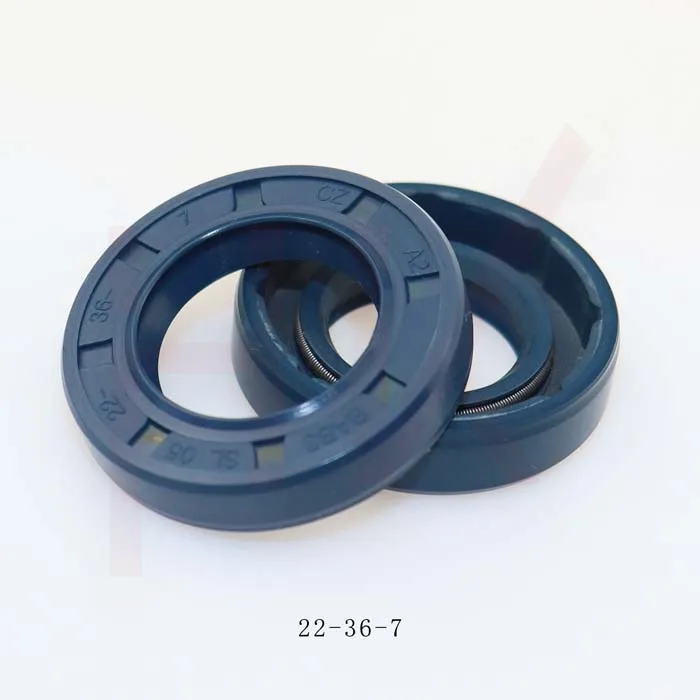ಡಿಸೆ . 24, 2024 10:10 Back to list
Understanding the Functionality and Importance of Rotary Oil Seals in Machinery
Understanding Rotary Oil Seals An Essential Component in Mechanical Systems
Rotary oil seals are an integral part of countless machines and mechanical systems, serving the critical function of preventing the leakage of lubricants and contaminants. These seals are predominantly used in rotating equipment, including engines, gearboxes, pumps, and electric motors. Understanding their function, types, and maintenance can significantly impact the efficiency and longevity of machinery.
What Are Rotary Oil Seals?
At their core, rotary oil seals are devices designed to retain lubricants within a system while simultaneously blocking dirt and moisture from entering. Typically manufactured from elastomers (rubber-like materials) like nitrile (NBR), fluorocarbon (FKM), or silicone, they are molded into a precision shape to fit around a rotating shaft. The design usually includes a sealing lip that makes contact with the shaft, creating a barrier essential for optimal performance.
How Do They Work?
The design of rotary oil seals is straightforward yet effective. When properly installed, the sealing lip of the oil seal exerts a radial load onto the rotating shaft. This contact creates a necessary interference that prevents oil from leaking out and dirt from entering. The effective function of a rotary oil seal is not only based on the material and design but also on the quality of its installation and the operating conditions of the machinery.
Types of Rotary Oil Seals
Rotary oil seals come in various designs and configurations, each tailored to specific applications
1. Single-Lip Seals These are the most common type, equipped with one lip for sealing. They are suitable for low-pressure applications and are often found in automotive and industrial applications.
2. Double-Lip Seals Featuring two sealing lips, these seals offer enhanced protection against contaminants and are ideal for high-pressure scenarios. The additional lip helps prevent the ingress of dust and moisture.
rotary oil seals

3. Spring-Loaded Seals These seals have a spring that pushes the sealing lip against the shaft, improving the sealing capability. They are beneficial in applications where there might be shaft movement or vibration.
4. V-Ring Seals A more versatile design, V-ring seals can accommodate angular misalignment and provide excellent sealing performance in light-duty situations.
5. Dynamic Seals Specifically designed for high-speed rotating shafts, these seals minimize friction and heat generation, thereby improving efficiency and extending service life.
Application Areas
Rotary oil seals find extensive application across various industries. In automotive engineering, they are critical for keeping engine oils contained, ensuring efficient lubrication of moving parts, and maintaining overall performance. In industrial settings, they help protect bearings and shafts from contamination, which is essential for the operation of conveyor systems, pumps, and hydraulic systems. Additionally, rotary oil seals are crucial in agricultural machinery, where they protect mechanical systems from dirt, dust, and moisture.
Maintenance and Troubleshooting
While rotary oil seals are designed for durability, proper maintenance is paramount to ensure their longevity and performance. Regular inspections for wear, damage, or improper installation can prevent unexpected leaks and equipment failures. Signs of a failing oil seal may include oil leakage, increased friction, or unusual noises from the machinery.
When replacing a rotary oil seal, it is crucial to follow manufacturer specifications regarding dimensions and materials to avoid compatibility issues. Additionally, ensuring that the shaft surface is smooth and free of debris will facilitate a successful seal installation.
Conclusion
Rotary oil seals may be small components, but their impact on machinery performance is profound. By understanding their function, types, and maintenance needs, operators can enhance the durability of their equipment while ensuring smooth operation. Whether in automotive applications or in industrial machines, the significance of rotary oil seals cannot be overstated, as they help maintain optimal performance and prolong the lifespan of mechanical systems. As technology evolves, so too will the design and functionality of rotary oil seals, ensuring continued reliability in various applications.
-
Unlocking the Potential of Hydraulic Systems with Essential Sealing Solutions
NewsAug.06,2025
-
Unleash the Power of Your Hydraulic Systems with Our Premium Seal Kits
NewsAug.06,2025
-
Specialized Hydraulic Seal Kits for Breakers, Pistons, and Presses
NewsAug.06,2025
-
Revitalize Hydraulic Systems with Premium Repair and Seal Kits
NewsAug.06,2025
-
Fortify Your Cylinders with Premium Sealing Solutions
NewsAug.06,2025
-
Elevate Hydraulic System Reliability with Specialized Seal Kits
NewsAug.06,2025
-
TCN Oil Seal Metal Ring Reinforcement for Heavy Machinery
NewsJul.25,2025
Products categories
















